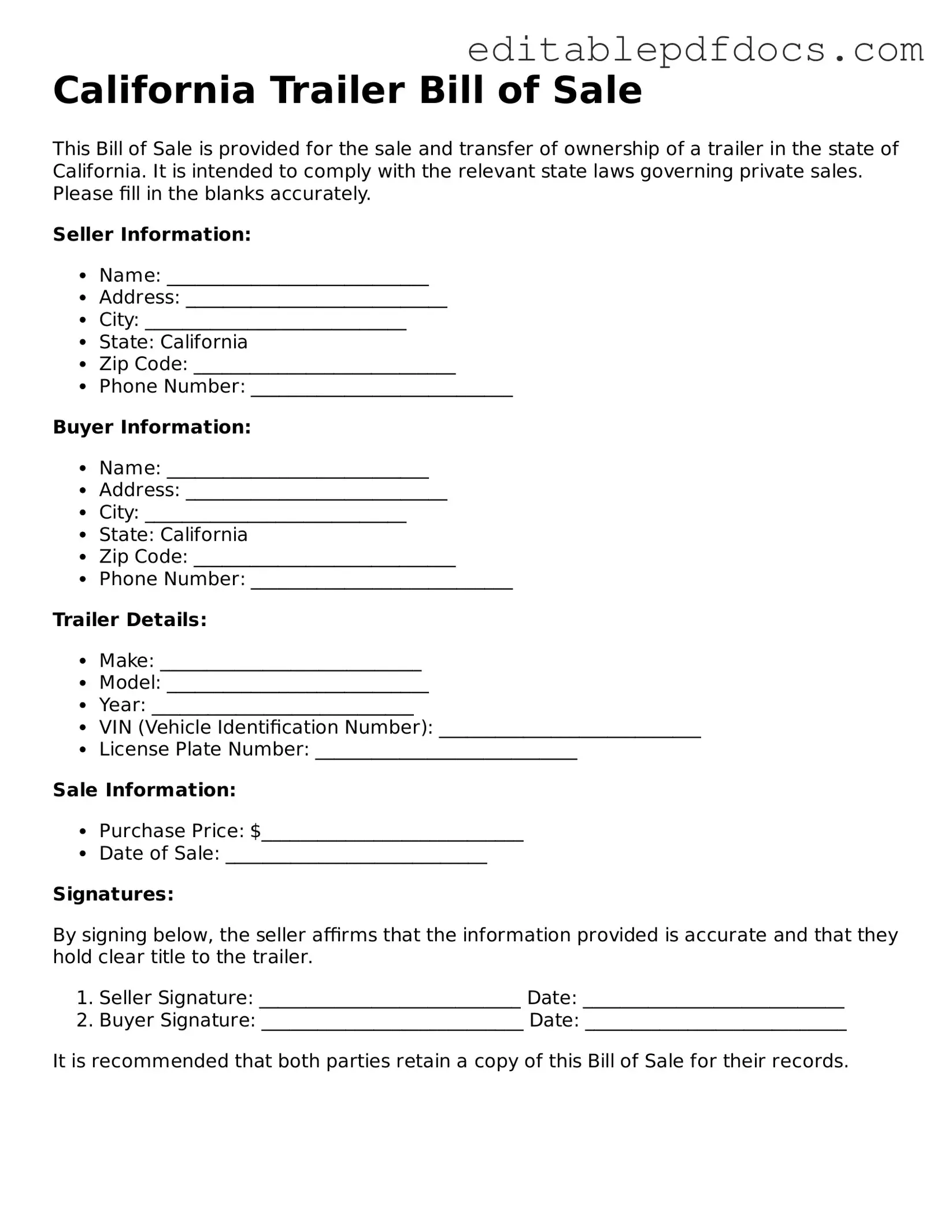When filling out the California Trailer Bill of Sale form, individuals often overlook important details that can lead to complications down the line. One common mistake is failing to provide accurate information about the trailer itself. This includes the Vehicle Identification Number (VIN), make, model, and year. Inaccurate or incomplete information can create issues when the new owner attempts to register the trailer.
Another frequent error involves the signatures. Both the seller and the buyer must sign the form for it to be legally binding. Sometimes, people forget to include one of the signatures, or they may not date the document. A missing signature or date can render the bill of sale invalid, complicating the transfer of ownership.
Many individuals also neglect to include the sale price of the trailer. This figure is crucial, as it not only establishes the value of the transaction but also may be required for tax purposes. Without a stated sale price, the form may not fulfill its intended function, and the buyer could face challenges when registering the trailer.
Additionally, some people fail to make copies of the completed form. After the transaction, it's wise for both parties to keep a copy for their records. Without a copy, disputes may arise regarding the terms of the sale, and having documentation can help resolve any misunderstandings.
Finally, individuals sometimes forget to check for additional requirements specific to their county or city. While the California Trailer Bill of Sale form covers the basics, local regulations may require additional documentation or steps. Ignoring these local nuances can lead to delays or issues in the registration process.
